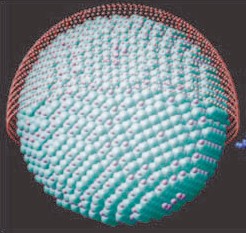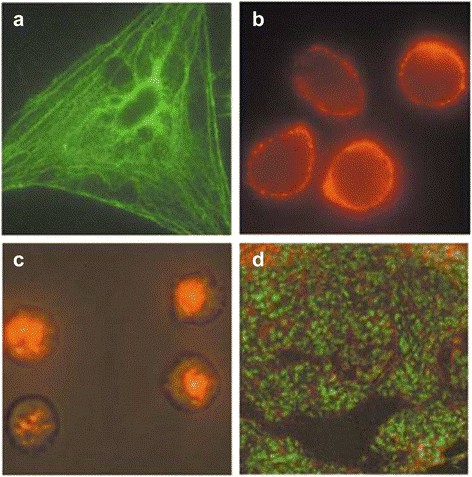Labels, including fluorophore, biotin, enzymes, and radioactive isotopes, have greatly contributed to research in molecular biology, cell biology and biochemistry. Various labels have been used to detect, identify, track and sort biomolecules, and to facilitate the study of molecular structure and interactions. A new type of labeling, quantum dot labeling (QD), has attracted a lot of attention recently. QD is a type of fluorescent semiconductor nanocrystal with unique optical and electrical properties due to its quantum effect and size effect. It has been widely used in many fields of life science.

QD nanocrystal is a nanometer-scale atom cluster, which is completely different from traditional fluorophores.
QD used in bio-research is colloidal nanocrystal. The most popular QD for biological applications is made of Cadmium mixed with Selenium cores coated with a layer of zinc sulfide.
QD nanocrystals can be coupled to proteins, oligonucleotides through bio-conjugation, such as streptavidin/biotin and protein A/Fc. It is an excellent replacement for traditional dyes due to its special optical properties. Conjugation of QDs to protein can be achieved by three various methods: i) use of EDC (1-ethyl-3-(3-dimethylaminopropyl) carbodiimide,); ii) direct binding using thiolated peptides or polyhistidine residues; iii) absorption or non-covalent self-assembly using engineered proteins. The emission of QD nanocrystal is narrow and symmetric, therefore allowing multiple colors to be used simultaneously, leading to its wide application in cellular labeling, tissue imaging and other biochemical assays.
 Figure 1. Fluorescence micrographs of QD-stained cells and tissues (Zhao, M.X.; Zeng, E.Z. 2015)
Figure 1. Fluorescence micrographs of QD-stained cells and tissues (Zhao, M.X.; Zeng, E.Z. 2015)
As an expert in protein research, Profacgen focuses on the research of nanotechnology and physicochemical properties of quantum dots. Leveraging its great value in optical and biological aspects, we offer a wide range of QD conjugation strategies to meet the specific requirements of your project.
During the experiment, we can:
Profacgen has accumulated lots of experience in protein labeling. Our professional technical team can provide customers with high-quality quantum dot labeling technology and many related featured services. Our competitive prices and extensive expertise have earned us the trust of our collaborators. Contact us to find out how Profacgen could be of assistance.
References
Fill out this form and one of our experts will respond to you within one business day.